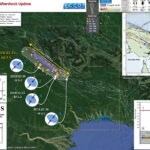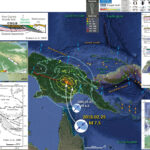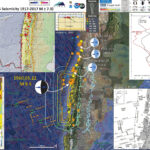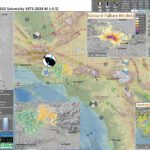The aftershocks are still coming in! We can use these aftershocks to define where the fault may have slipped during this M 7.5 earthquake. As I mentioned yesterday in the original report, it turns out the fault dimension matches pretty…
Earthquake Report: Papua New Guinea
This morning (local time in California) there was an earthquake in Papua New Guinea with, unfortunately, a high likelihood of having a good number of casualties. I was working on a project, so could not immediately begin work on this…
Earthquake Report: ¡Oaxaca, Mexico!
There was just now an earthquake in Oaxaca, Mexico between the other large earthquakes from last 2017.09.08 (M 8.1) and 2017.09.08 (M 7.1). There has already been a M 5.8 aftershock.Here is the USGS website for today’s M 7.2 earthquake.…
Earthquake Report: 1960 Valdivia, Chile M 9.5
In commemoration of the #EarthquakeCup, I have put together a summary for the largest instrumentally recorded earthquake, the M 9.5 1960 Valdivia, Chile Earthquake. The Peru-Chile trench is quite active and generated Great earthquakes (M>8) in 1985, 2010, 2014, and…
Earthquake Report: 1971 Sylmar, CA
This earthquake was the second earthquake in the state of CA to lead to major changes in how people in the state handled earthquake hazards and risk and today is the 47th anniversary of this earthquake. The first important earthquake…





